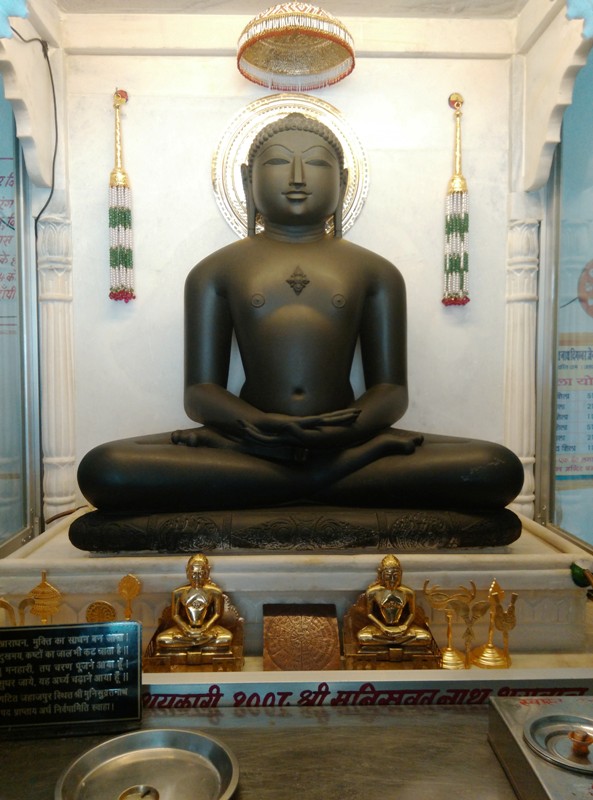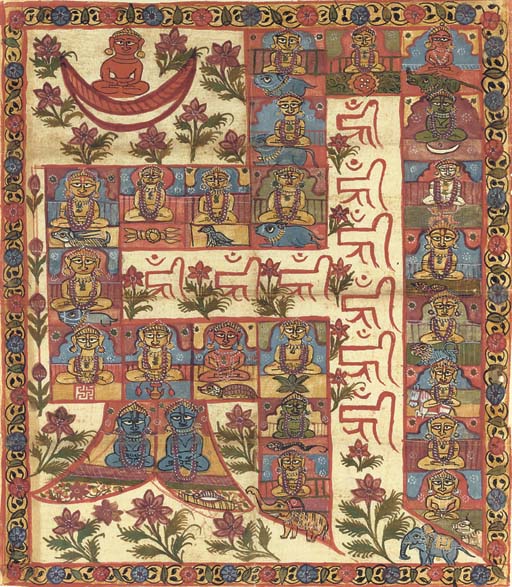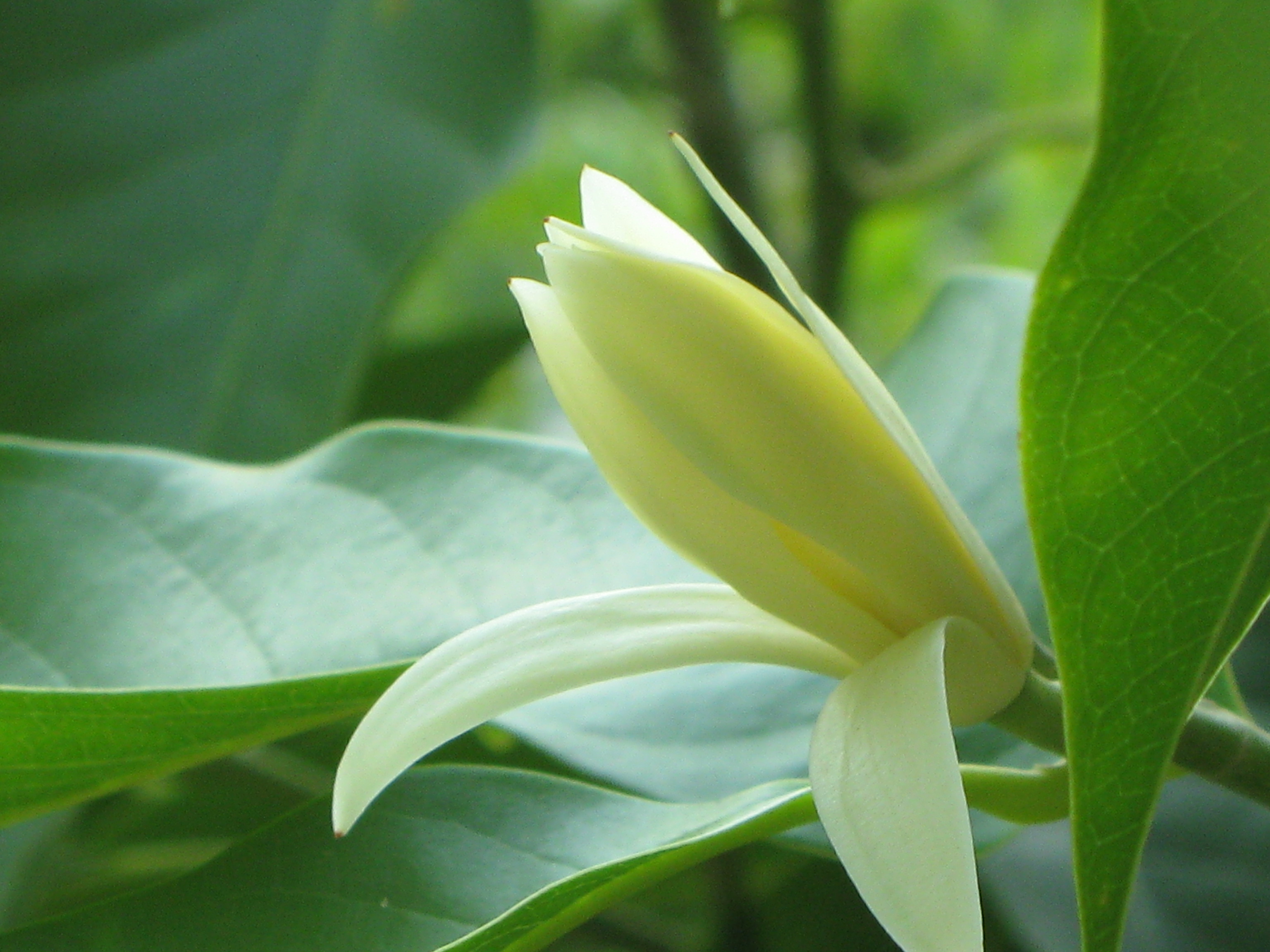|
Munisuvrata
Munisuvrata () was the twentieth ''tirthankara'' of the present half time cycle (''avasarpini'') in Jain cosmology. He became a siddha, a liberated soul which has destroyed all of his karma. Events of the Jaina version of Ramayana are placed at the time of Munisuvrata. Munisuvrata lived for over 30,000 years. His chief apostle ('' gaṇadhara'') was sage ''Malli Svāmi''. Legends Munisuvrata was the twentieth ''tirthankara'' of the present half time cycle (''avasarpini'') in Jain cosmology. Jain texts like ''padmapurana'' place him as a contemporary of Rama. According to Jain texts, Munisuvrata was born as 54 lakh years passed after the birth of the nineteenth ''tirthankara'', ''Mallinātha''. According to Jain beliefs, Munisuvrata descended from the heaven called ''Ānata kalpa'' on the twelfth day of the bright half of the month of ''Āśvina – āśvina śukla dvādaśi''– to queen Padmavati and king Sumitra. On the third day of ''Shraavana'' (month) ''Krishna'' (dark fo ... [...More Info...] [...Related Items...] OR: [Wikipedia] [Google] [Baidu] |
Jahazpur
Jahazpur is a city and a municipality in Bhilwara district in the Indian state of Rajasthan.It is also the tehsil headquarters of the Jahazpur tehsil. It is commonly popular for a temple called Jain temple swastidham and built around a fort. History According to legend, the fort of Jahazpur was originally built by Samprati, grandson of the great Mauryan emperor Ashoka, who was a follower of Jainism. This fort used to protect the terrain of Hadoti Bundi and Mewar like a giridwar. In the tenth century, Rana Kumbha rebuilt the fort of Jahazpur. Jahazpur is an ancient town in Rajasthan near Bundi and Shahpura, towns of Bhilwara (polar coordinates: 25 ° 37'7 "N 75 ° 16'32" E), and the town of Deoli in Tonk district, . The ruins of several ancient Jain temples have been found at Jahazpur. It is also a municipal and assembly constituency. This area is full of mineral wealth. Geography Jahazpur is located at . It has an average elevation of . There is a Jain Mandir in the shape ... [...More Info...] [...Related Items...] OR: [Wikipedia] [Google] [Baidu] |
Tirthankara
In Jainism, a ''Tirthankara'' (Sanskrit: '; English: literally a ' ford-maker') is a saviour and spiritual teacher of the '' dharma'' (righteous path). The word ''tirthankara'' signifies the founder of a '' tirtha'', which is a fordable passage across the sea of interminable births and deaths, the '' saṃsāra''. According to Jains, a ''Tirthankara'' is an individual who has conquered the ''saṃsāra'', the cycle of death and rebirth, on their own, and made a path for others to follow. After understanding the true nature of the self or soul, the ''Tīrthaṅkara'' attains '' Kevala Jnana'' (omniscience). Tirthankara provides a bridge for others to follow the new teacher from ''saṃsāra'' to ''moksha'' (liberation). In Jain cosmology, the wheel of time is divided in two halves, Utsarpiṇī' or ascending time cycle and ''avasarpiṇī'', the descending time cycle (said to be current now). In each half of the cosmic time cycle, exactly twenty-four ''tirthankaras'' grace t ... [...More Info...] [...Related Items...] OR: [Wikipedia] [Google] [Baidu] |
Naminatha
Naminatha was the twenty-first ''tirthankara'' of the present half time cycle, Avsarpini. He was born to the King Vijaya and Queen Vipra of the Ikshvaku dynasty. King Vijaya was the ruler of Mithila at that time. ''Naminatha'' lived for 10,000 years. When Naminatha was in his mother's womb, Mithila was attacked by a group of powerful kings. The aura of Naminatha forced all the kings to surrender to King Vijaya. Legends Naminatha was born on the 8th day of Shravan Krishna of the lunisolar Jain calendar. He attained Kevala Jnana under a Bakula tree. He had 17 Ganadhara, Suprabha being the leader. According to Jain tradition, he liberated his soul by destroying all of his karma and attained Moksha from Sammed Shikhar nearly 571,750 years before Neminatha. He was preceded by Munisuvrata who is believed to have lived 570,000 years before him. See also *God in Jainism *Arihant (Jainism) *Jainism Jainism ( ), also known as Jain Dharma, is an Indian religion. Jainism tra ... [...More Info...] [...Related Items...] OR: [Wikipedia] [Google] [Baidu] |
Rajgir
Rajgir, meaning "The City of Kings," is a historic town in the district of Nalanda in Bihar, India. As the ancient seat and capital of the Haryanka dynasty, the Pradyota dynasty, the Brihadratha dynasty and the Mauryan Empire, as well as the dwelling ground of such historical figures as The Buddha and The Mahavira, the city holds a place of prominence in Hindu, Buddhist and Jain scriptures. As of 2011, the population of the town was reported to be 71,459 while the population in the community development block was about 88,500. Rajgir was the first capital of the ancient kingdom of Magadha, a state that would eventually evolve into the Mauryan Empire. It finds mention in India's renowned literary epic, the Mahabharata, through its king Jarasandha. The town's date of origin is unknown, although ceramics dating to about 1000 BC have been found in the city. The 2,500-year-old cyclopean wall is also located in the region. The town is also notable in Jainism and Buddhism. It ... [...More Info...] [...Related Items...] OR: [Wikipedia] [Google] [Baidu] |
Tirthankara
In Jainism, a ''Tirthankara'' (Sanskrit: '; English: literally a ' ford-maker') is a saviour and spiritual teacher of the '' dharma'' (righteous path). The word ''tirthankara'' signifies the founder of a '' tirtha'', which is a fordable passage across the sea of interminable births and deaths, the '' saṃsāra''. According to Jains, a ''Tirthankara'' is an individual who has conquered the ''saṃsāra'', the cycle of death and rebirth, on their own, and made a path for others to follow. After understanding the true nature of the self or soul, the ''Tīrthaṅkara'' attains '' Kevala Jnana'' (omniscience). Tirthankara provides a bridge for others to follow the new teacher from ''saṃsāra'' to ''moksha'' (liberation). In Jain cosmology, the wheel of time is divided in two halves, Utsarpiṇī' or ascending time cycle and ''avasarpiṇī'', the descending time cycle (said to be current now). In each half of the cosmic time cycle, exactly twenty-four ''tirthankaras'' grace t ... [...More Info...] [...Related Items...] OR: [Wikipedia] [Google] [Baidu] |
Rama
Rama (; ), Ram, Raman or Ramar, also known as Ramachandra (; , ), is a major deity in Hinduism. He is the seventh and one of the most popular '' avatars'' of Vishnu. In Rama-centric traditions of Hinduism, he is considered the Supreme Being. Rama is said to have been born to Kaushalya and Dasharatha in Ayodhya, the ruler of the Kingdom of Kosala. His siblings included Lakshmana, Bharata, and Shatrughna. He married Sita. Though born in a royal family, their life is described in the Hindu texts as one challenged by unexpected changes such as an exile into impoverished and difficult circumstances, ethical questions and moral dilemmas. Of all their travails, the most notable is the kidnapping of Sita by demon-king Ravana, followed by the determined and epic efforts of Rama and Lakshmana to gain her freedom and destroy the evil Ravana against great odds. The entire life story of Rama, Sita and their companions allegorically discusses duties, rights and social responsibil ... [...More Info...] [...Related Items...] OR: [Wikipedia] [Google] [Baidu] |
Mallinatha
Mallinatha (Prakrit ''Mallinātha'', "Lord of jasmine or seat") was the 19th Tirthankara, tīrthaṅkara "ford-maker" of the Jain cosmology#Time cycle, present ''avasarpiṇī'' age in Jainism. Jain texts indicate Mālliṇātha was born at Mithila (ancient), Mithila into the Ikshvaku dynasty to King Kumbha and Queen Prajnavati. ''Tīrthaṅkara Māllīnātha'' lived for over 56,000 years, out of which 54,800 years less six days, was with omniscience (Kevala Jnana). Mallinatha is believed to be a woman named Malli Devi by Śvētāmbara, Shvetambara Jains while the Digambara sect believes all 24 tirthankara to be men including Māllīnātha. Digambara tradition believes a woman can reach to the 16th heaven and can attain liberation only being reborn as a man. Digambara tradition says Mallinatha was a son born in a royal family, and worships Mallinatha as a male. However, the Shvetambara tradition of Jainism states that Māllīnātha was female with a name Malli bai. According ... [...More Info...] [...Related Items...] OR: [Wikipedia] [Google] [Baidu] |
Tiloyapannati
''Tiloya Panatti'' or ''Trilokaprajnapati'' is one of the earlier Prakrit texts on Jain cosmology composed by Acharya Yativrshabha. The subject matter Jain cosmology has a unique perception of the Universe. It perceives different solar and lunar entities in a manner that is different from the current cosmology as well those put forward by different cultures. According to Jain cosmology, this universe is an uncreated entity existing since beginningless time. The Universe is made up of what Jains call six dravya or reals or substances - Living beings, non-living things or matter, space, time and the principles of motion and rest. The universe itself is divided abode of gods, abode of humans and animals, and abode of hellish beings. Contents The Tiloya Panatti is a Prakrit work in the Jain Shauraseni dialect and has been composed primarily in the Arya metre. The work has a total of 5677 verses divided into 9 chapters. The chapter scheme is as under: #The Entire Universe (''Loka' ... [...More Info...] [...Related Items...] OR: [Wikipedia] [Google] [Baidu] |
Samantabhadra (Jain Monk)
Samantabhadra was a Digambara acharya (head of the monastic order) who lived about the later part of the second century CE. He was a proponent of the Jaina doctrine of Anekantavada. The ''Ratnakaranda śrāvakācāra'' is the most popular work of Samantabhadra. Samantabhadra lived after Umaswami but before Pujyapada. Life Samantabhadra is said to have lived from 150 CE to 250 CE. He was from southern India during the time of Chola dynasty. He was a poet, logician, eulogist and an accomplished linguist. He is credited with spreading Jainism in southern India. Samantabhadra, in his early stage of asceticism, was attacked with a disease known as ''bhasmaka'' (the condition of insatiable hunger). As, digambara monks don't eat more than once in a day, he endured great pain. Ultimately, he sought the permission of his preceptor to undertake the vow of Sallekhana. The preceptor denied the permission and asked him to leave monasticism and get the disease cured. After getting cured ... [...More Info...] [...Related Items...] OR: [Wikipedia] [Google] [Baidu] |
Uttarapurana
''Uttarapurana'' is a Jain text composed by ''Acharya'' Gunabhadra in the 9th century CE. According to the Digambara ''Digambara'' (; "sky-clad") is one of the two major schools of Jainism, the other being '' Śvētāmbara'' (white-clad). The Sanskrit word ''Digambara'' means "sky-clad", referring to their traditional monastic practice of neither possessing ... ''Uttarapurana'' text, Mahavira was born in Kundpur in the Kingdom of the Videhas. The narration in Uttarapurana continues the account in Mahapurana, written by Acharya Jinasena and completed by Gunabhadra. References Citations Sources * * Jain texts {{India-culture-stub ... [...More Info...] [...Related Items...] OR: [Wikipedia] [Google] [Baidu] |
Champaka
''Magnolia champaca'', known in English as champak (), is a large evergreen tree in the family Magnoliaceae.efloras.org: Flora of China treatment of ''Michelia (Magnolia) champaca'' accessed 7.12.2015 It was previously classified as ''Michelia champaca''. It is known for its fragrant flowers, and its timber used in woodworking. Etymology The species epithet, ''champaca'', comes from the Sanskrit word ().Vernacular names Other vernacular names in include joy perfume tree,[...More Info...] [...Related Items...] OR: [Wikipedia] [Google] [Baidu] |




